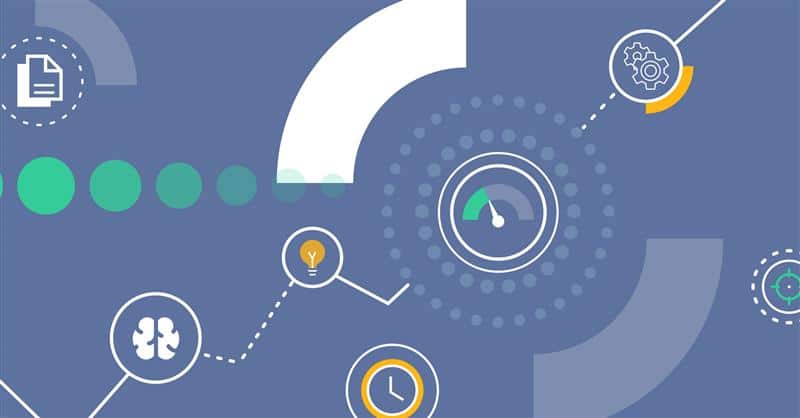Introduction
In a dynamic and highly competitive business environment, organizations continually seek to improve their operations and achieve higher levels of excellence. In this context, Process Management is a fundamental tool for achieving these objectives, enabling companies to improve their efficiency, effectiveness, and competitiveness. However, the process for its implementation is not instantaneous but requires a gradual and strategic approach, known as process management maturity.
What is process management maturity?
Process management maturity refers to the degree of development and implementation within an organization. It is an evolutionary process that goes through various stages, from an informal and intuitive approach to the full integration of process management into the culture and strategy of the company.
The five levels of maturity:
Next, we will explore the five levels of process management maturity, from an initial stage of ad hoc focus to complete and optimized integration into the culture and business strategy. Each level represents a milestone on the path to operational excellence, and we will understand how organizations can progress through these levels to achieve their goals.
Level 1: Initial
In this initial stage, Process Management has not been formally implemented in the organization. Processes are ad hoc, meaning they are informally performed and are not standardized or systematically documented. There is a lack of clarity regarding roles and responsibilities in process execution, which can lead to inconsistencies in company operations. At this level, the organization may experience efficiency and quality issues due to a lack of control over processes.
Level 2: Repeatable
At the repeatable level, the organization begins to take steps to standardize and document some of its key processes. While there may still be inconsistencies in process execution, steps are being taken to improve consistency and repeatability. The efficiency and effectiveness of processes are measured by identifying and tracking key performance indicators (KPIs). Although documentation and standardization are limited at this level, the groundwork is laid for future improvements in process management.
Level 3: Defined
At the defined level, most of the organization’s key processes have been formally documented and standardized. Clear roles and responsibilities are established for process execution and management, which helps improve consistency and quality in product or service delivery. The organization begins to adopt more mature process management practices, such as assigning process owners and defining clear workflow. This level lays the foundation for further process management maturity by providing a solid framework to build upon.
Level 4: Managed
At the managed level, the organization implements a more systematic approach to process management. Monitoring and measurement mechanisms for processes are established regularly, allowing deviations and areas for improvement to be identified in a timely manner. A culture of continuous improvement is encouraged, and proactive efforts are made to optimize existing processes. The organization focuses on identifying and eliminating bottlenecks, reducing cycle times, and maximizing operational efficiency.
Level 5: Optimized
At the highest level of maturity, Process Management becomes an integral part of the organization’s culture and strategy. Processes are continuously optimized over time and used as a platform for innovation and continuous improvement. Experimentation and adoption of new practices and technologies to drive efficiency and competitiveness are encouraged. The organization is characterized by its ability to adapt quickly to market changes and stay ahead in its industry.
How to assess the level of process management maturity?
Assessing the level of process management maturity in an organization is essential for identifying areas for improvement and defining an appropriate action plan. Here are some key steps to carry out this assessment:
Analysis of existing processes
Conduct a thorough analysis of your organization’s current processes. Examine how processes are documented, executed, and monitored in different areas and departments.
Questionnaires or surveys
Design specific questionnaires or surveys to obtain feedback from employees at different levels of the organization. Ask about their perception of process effectiveness, clarity of roles and responsibilities, and alignment with the company’s strategic objectives.
Interviews with key stakeholders
Conduct interviews with key stakeholders, including team leaders, department managers, and executive-level managers. Get their input on the effectiveness of current processes, challenges they face, and opportunities for improvement.
Evaluation of documentation and performance indicators
Review existing process documentation, such as manuals, procedures, and flowcharts. Additionally, analyze key performance indicators (KPIs) associated with processes to assess their efficiency and effectiveness.
Comparison with established maturity models
Various Process Management maturity models allow companies to assess their current state. Some of the most commonly used models include the CMMI (Capability Maturity Model Integration), SCOR (Supply Chain Operations Reference), and Fisher’s BPM maturity model. These models not only help evaluate the company’s current state regarding process management but also facilitate the definition of an improvement plan and allow performance comparison with other companies in the same sector.
Development of an action plan
Based on the assessment results, develop a detailed action plan to improve the level of process management maturity in your organization. Set clear objectives, identify specific actions to take, and assign responsibilities to relevant teams.
By conducting this maturity level assessment, your organization will be better prepared to implement effective process management improvements and progress towards higher levels of business excellence.
Benefits of mature process management:
• Increased efficiency and productivity, resulting in cost reduction, cycle time reduction, waste reduction, and/or rework reduction.
• Improvement in product and service quality.
• Greater customer satisfaction and loyalty.
• Increased flexibility and ability to adapt to market changes.
• Informed decision-making based on reliable data and metrics.
• Culture of continuous improvement with a focus on constant process optimization.
How to achieve maturity in process management:
- Start with a pilot project to implement Process Management in a specific area and gain experience and learning.
- Involve all employees through training and awareness of the importance of Process Management.
- Define a clear strategy with specific and measurable objectives for Process Management implementation.
- Select the right technological tools that facilitate process management.
- Evaluate the impact of Process Management and make necessary adjustments through measurement and monitoring of results.
- Promote a culture of continuous improvement where process improvement is a fundamental value.
The role of technology in Process Management:
Success in BPM implementation depends not only on organizational culture but also on the effective use of technology. The combination of a culture that promotes efficiency and continuous improvement with the support of appropriate technological tools is essential to achieve an optimal level of maturity in process management.
Using a Business Process Management (BPM) tool like Qflow can help you achieve maturity in process management.
Qflow is a comprehensive and versatile tool that allows you to:
Design
• Create and design diagrams of your processes easily and intuitively, without technical knowledge.
• Use BPMN V2 notation, standard in the business world, to visualize your processes clearly and concisely.
Document
• Detail the specific roles each user plays in the process and the tasks they must carry out.
• Integrate with other systems to facilitate interaction with any other software or platform used in the organization.
Automate
• Transform the designed process into a system, configuring each activity, event, and gate.
• Define reminders and alerts to avoid delays and automatically reassign tasks that are not completed within a certain time frame.
Control and measure
• Generate traces of each action taken on the platform to monitor efficiency.
• Configure custom control dashboards to analyze data and make informed decisions.
Manage
• Ensure compliance with SLAs.
• Audit processes in a user-friendly manner.
• View process status in real-time with custom dashboards.
• Unify information by integrating Qflow with other tools.
Conclusion
Achieving an optimal level of maturity in Process Management is a journey that requires commitment, sustained effort, and a strategic vision. However, the benefits are significantly significant: increased efficiency, quality, customer satisfaction, and adaptability. With the right combination of organizational culture, advanced technology, and a focus on continuous improvement, organizations can excel in a competitive and ever-changing market.






